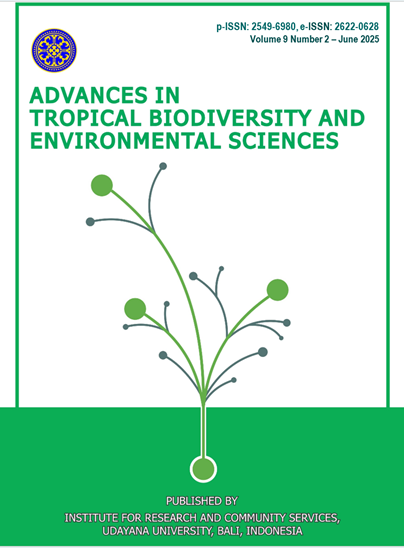Analysis of Tourism Suitability and Carrying Capacity of Mangrove Areas in Sumberkima Village, Buleleng Regency, Bali
DOI:
https://doi.org/10.24843/ATBES.2025.v09.i02.p09Keywords:
mangrove health, tourism suitability, mangrove tourism, carrying capacity, Sumberkima villageAbstract
The mangrove forests in Sumberkima Village, Buleleng Regency, Bali, hold significant potential for development as eco-friendly tourism destinations. This study aims to analyze the mangrove health index and the suitability of the mangrove area as an ecotourism destination, and to determine the area's carrying capacity for tourism activities. The methodology involves analyzing ecotourism parameters, including mangrove thickness and density, mangrove species, tidal patterns, and the presence of biotic objects. Primary data were collected through field observations, while secondary data were obtained from official sources. The study results indicate that the mangrove area in Sumberkima Village has a mangrove health index ranging from 34.89% to 51.18%, categorized as moderate. The mangrove tourism suitability index reveals that one observation station falls into the "suitable" category, with an index of 2.12, while the other two stations are classified as "not suitable." The carrying capacity for mangrove trekking activities is estimated at 223 visitors per day. This study concludes that the mangrove area in Sumberkima Village has potential for development as an ecotourism area. However, efforts to improve the quality of the mangrove ecosystem and tourism infrastructure are necessary to optimize the area's potential in a sustainable manner.
Downloads
Published
How to Cite
License
Copyright (c) 2025 Advances in Tropical Biodiversity and Environmental Sciences

This work is licensed under a Creative Commons Attribution-ShareAlike 4.0 International License.










